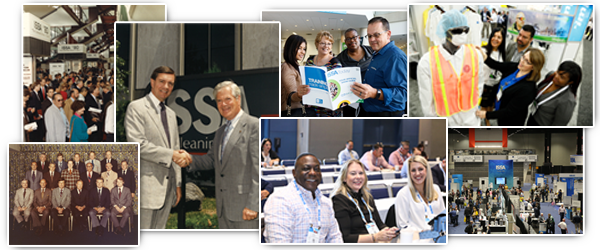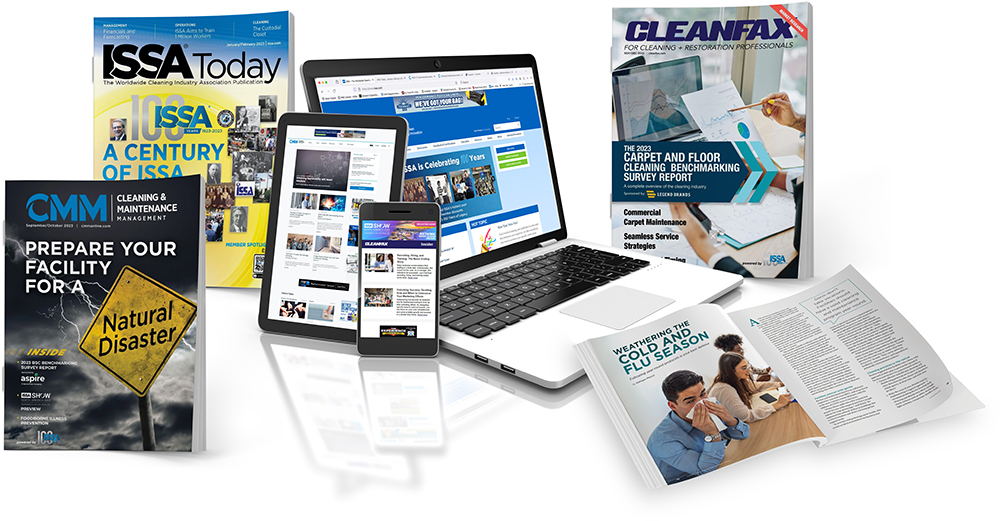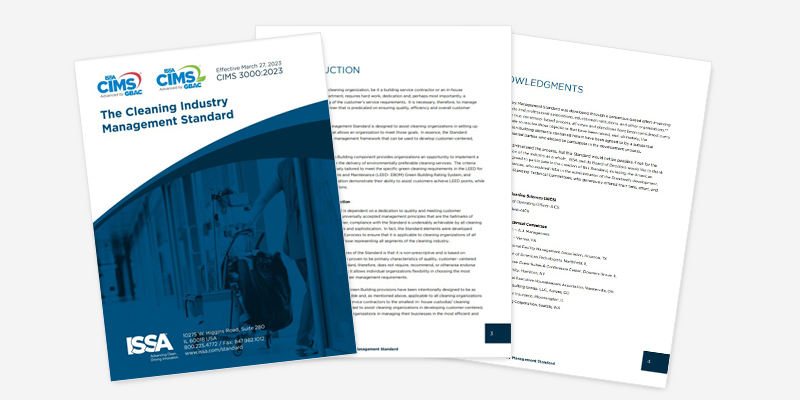Turning Tension Into Trust
In any workplace, from the board room to the break room, one constant remains: Tough conversations are inevitable. Whether it’s giving difficult feedback, resolving conflict, navigating restructuring, or addressing underperformance, knowing how to handle these conversations with empathy and strategy is a vital leadership skill.
In a recent webinar by the ISSA Hygieia Network, three industry leaders—Poonam Dewangan, Sylvia Imm, and Katie Stowe—shared their insights and personal experiences navigating difficult dialogues. Their collective message: Preparation, emotional control, and active listening can turn tension into trust.
Watch the webinar here, and keep reading below.
Prepare with purpose
Poonam Dewangan, senior manager of sourcing project management at Nilfisk, started the session by addressing the fear and discomfort often accompanying tough conversations. “If it makes your stomach turn a little, you know it’s a tough one,” she said.
Her advice was to start with clarity. “Define your purpose,” Dewangan said. “Know exactly what you want to achieve. Are you giving feedback, addressing a conflict, or aligning expectations? The more specific your goal, the more composed you’ll be.”
She stressed the importance of understanding the other party’s communication style and anticipating their concerns. “Plan your message clearly and avoid blame or generalization,” Dewangan advised. “Stick to facts, separate emotion from intent, and rehearse ahead of time.”
Stay composed under pressure
Sylvia Imm, senior director at Kimberly-Clark Professional, spoke on maintaining composure during emotionally charged conversations. “We often avoid these talks because of the unknown reactions: anger, silence, defensiveness. But as the initiator, we can control our delivery and model calmness,” she said.
Imm emphasized the difference between reaction and response. “Reacting is instinctual; responding is intentional,” she explained. She recommended physical preparation: sit comfortably, breathe, pause between points, and give the other person space to respond. Imm also encouraged role-playing and taking breaks if things escalate. “Empathy is key,” she said. “Even if you disagree, showing you care makes a lasting difference.”
One personal story Imm shared was telling a customer about price changes after which the client slammed the table, turned off the lights, and stormed out. “I hadn’t prepared for that reaction,” she reflected. “It taught me the value of staying grounded no matter what.”
Listen to learn
Katie Stowe, who leads the Curate division of Forward Solutions, focused on the art of active listening. “Listening with the intent to learn, not respond, is harder than it sounds,” she admitted. “We’re wired to solve. So when someone speaks, we’re already crafting our response, not absorbing their message.”
She shared simple but powerful tips: minimize distractions, mentally refocus when your attention drifts, and resist interrupting. “Clarifying questions are gold,” she added. “Repeat what you heard to confirm understanding. It prevents missteps, especially when emotions are high.”
Active listening, Stowe explained, is also about cultural tone. “If employees know they’ll be heard, it changes everything,” she said. “It builds trust, improves morale, and reduces misunderstandings.”
Delivering feedback with impact
Stowe also tackled feedback—a natural part of difficult conversations. She emphasized clarity, collaboration, and tone. “Make it safe and constructive,” she said. “Invite input, define clear next steps, and schedule follow-ups. Feedback should empower, not just correct.”
She also encourages leaders to seek feedback themselves. “I once got told I wasn’t being authentic,” Stowe explained. “I was so focused on listening perfectly that I lost my natural self. That feedback helped me grow.”
Real talk: tough scenarios and strategies
In a candid Q&A, the speakers shared real-world scenarios. Dewangan named performance reviews and layoffs as the toughest conversations she faces, often involving close colleagues. “Active listening helps,” she said. “You never know what someone’s going through.”
Imm added that high-stakes client negotiations and guiding teams through change can be just as challenging. Stowe brought up mediating peer conflicts: “You have to understand both sides deeply,” she said. “Preparation and empathy are your best tools.”
When asked how to avoid escalating conflict, Dewangan emphasized mental flexibility: “Prepare 200%, but be ready for discomfort,” she said. “Don’t assume things will go to plan.” Stowe agreed, noting that clarifying intent mid-conversation can de-escalate tension instantly.
On working under pressure, Dewangan said, “I tend to rush. So I train myself to pause, reflect, then respond.” Imm offered mindfulness tools like breathing and visualization. “Even letting people vent can be healing,” she explained. “Just help them rise above afterward.”
When resolution isn’t possible
One audience member asked what to do when the other party isn’t interested in resolution. Dewangan advised documenting agreed-upon goals early. “If things go off track, you can point to the original alignment.”
On handling toxic leaders protected by upper management, Stowe offered a sobering reality: “If a company ignores unethical behavior, you might be in the wrong place. But if you stay, be specific, document your concerns, and use the reporting channels you have.”
Each speaker reinforced a common truth: tough conversations are not just unavoidable; they’re growth opportunities. With preparation, emotional intelligence, and the courage to listen deeply, leaders at every level can transform hard talks into turning points.
“It’s not about winning,” Stowe concluded. “It’s about learning, adjusting, and building trust through every word.”
Learn more about the ISSA Hygieia Network and what you can do to support important programs and initiatives.
















